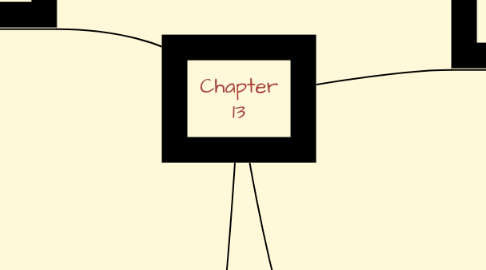
1. 13-2 How do Economists Measure the Size of an Economy?
1.1. Gross domestic product is the main measure of the size of a nation's economy, as well as an economic indicator of the economic output. A steady growing GDP is considered a sign of economic health.
1.1.1. Gross Domestic Product:the market value of all final goods and services produced within a country during a given period of time.
1.2. GDP is calculated using expenditures on goods and services in a country. The economy is then divided into four sectors, each sector making up one of the components of GDP: household consumption (C), business investment (I), government purchases (G), and the net of exports minus imports (NX).
1.3. GDP not only determines how big an economy is, but also measures whether it is growing or shrinking and at what rate.
1.3.1. Nominal GDP: a measure of a country’s economic output (GDP) valued in current dollars; nominal GDP does not reflect the effects of inflation.
1.3.2. Real GDP: a measure of a country’s economic output (GDP) valued in constant dollars; real GDP reflects the effects of inflation.
1.4. Gross domestic product is a useful tool for measuring economic growth. However using it to measure the overall health will have its limitations. As a country’s per capita GDP increases, indicators of well-being also increase.
2. 13-3 What does the Unemployment Rate Tell Us About an Economy's Health?
2.1. Like the GDP, unemployment rate is another good way to look at the health of an economy. High unemployment rates lean towards a poor economy. Every month the Bureau of Labor finds the rate of unemployment and compares it to the month(s) before.
2.1.1. Unemployment Rate: the percentage of the labor force that is not employed but is actively seeking work.
2.2. The Bureau of Labor gathers detailed information about unemployment. Four types of unemployment were found based on this data: frictional, structural, seasonal, and cyclical.
2.3. Even if the economy has full employment some people will always be out of work. When an economy reaches full employment, jobs exist for everyone who wants to work, even though a certain percentage of those jobs and workers will not yet have been matched together.
2.3.1. Natural Rate of Unemployment: the percentage of the labor force without work when the economy is at full employment; a condition in which the economy is strong and there is no cyclical unemployment
2.4. When trying to find out the unemployment rate the Bureau of Labor tries there hardest to be accurate. Even then they still may run into some problems. high unemployment rates are COSTLY.
2.4.1. Underground Economy:: a sector of the economy based on illegal activities, such as drug dealing and unlawful gambling.
3. 13-4 What Does the Inflation Rate Reveal About an Economy’s Health?
3.1. Runaway inflation can send an economy into a tailspin. The BLS tracks the cost of living to determine inflation. They also track the change of the cost of living.
3.1.1. Consumer Price Index: (CPI)a measure of price changes in consumer goods and services over time; the CPI shows changes in the cost of living from year to year.
3.2. Consumers pay nominal costs with nominal wages, or wages based on current prices. As prices go up, wages generally go up as well. By using the CPI to adjust for inflation, economists can calculate real wages and compare them over time.
3.3. The result of price changes can cause creeping inflation, hyper inflation, or deflation. Another factor of inflation is demand. The demand and the cost of products.
3.3.1. Demand Pull Inflation: a rise in the price of goods and services caused by an increase in overall demand.
3.3.2. Cost Push Inflation: a rise in the price of goods and services caused by increases in the cost of the factors of production.
3.4. The BSL uses the consumer price index to calculate the inflation rates, but critics have found that this could be less than accurate. However, we do know for sure that inflation of any amount sets the economic costs.
4. 13-5 How Does the Business Cycle Relate to Economic Health?
4.1. The business cycle consists of four phases: expansion, peak, contraction, and trough.
4.1.1. business cycle: a recurring pattern of growth and decline in economic activity over time.
4.2. Business cycles are irregular in both length and severity making peaks and troughs difficult to predict. Economists still attempt to do it using different economic factors.
4.2.1. leading economic indicators: measures that consistently rise or fall several months before an expansion or a contraction begins
4.2.2. lagging economic indicators: measures that consistently rise or fall several months after an expansion or contraction begins

